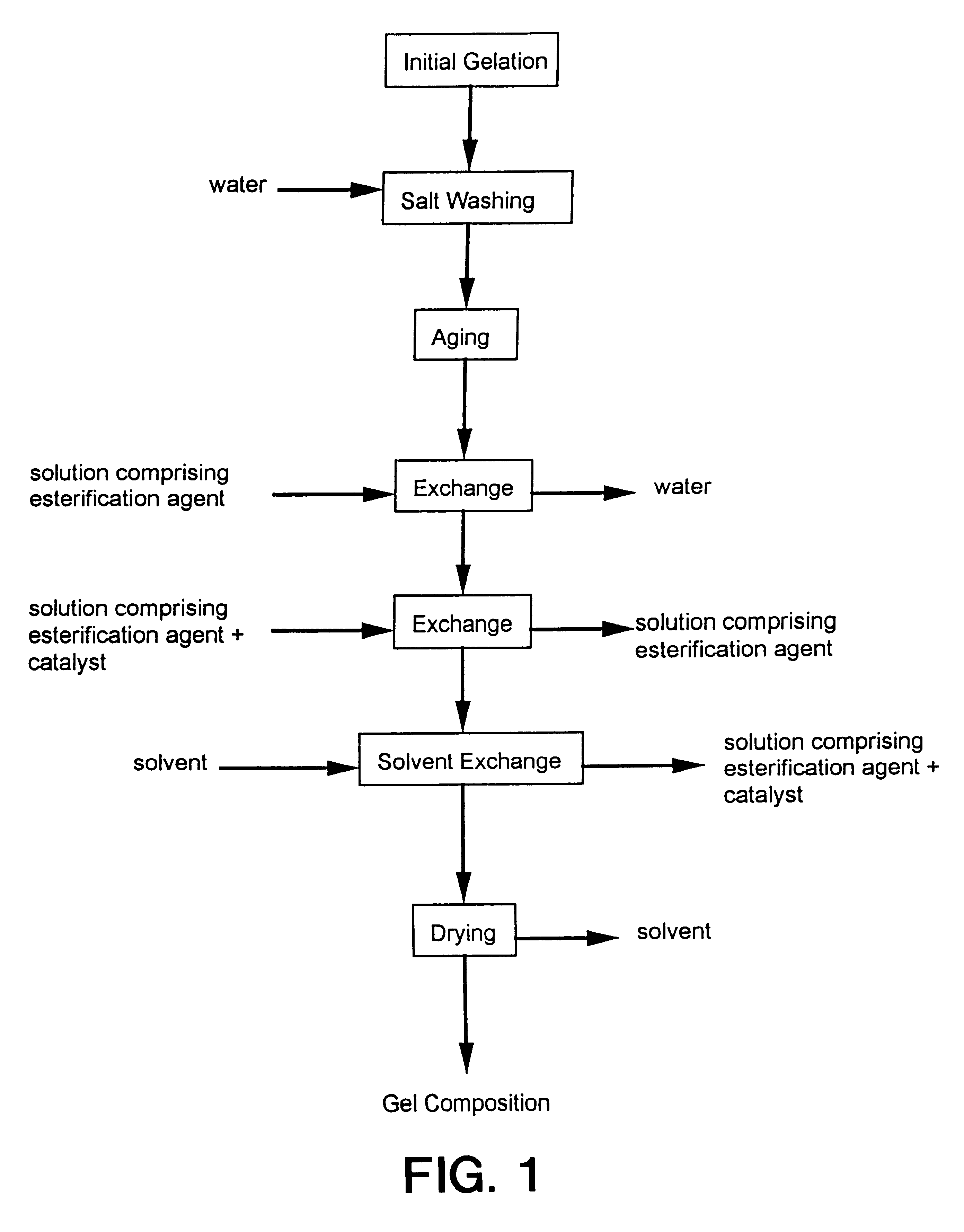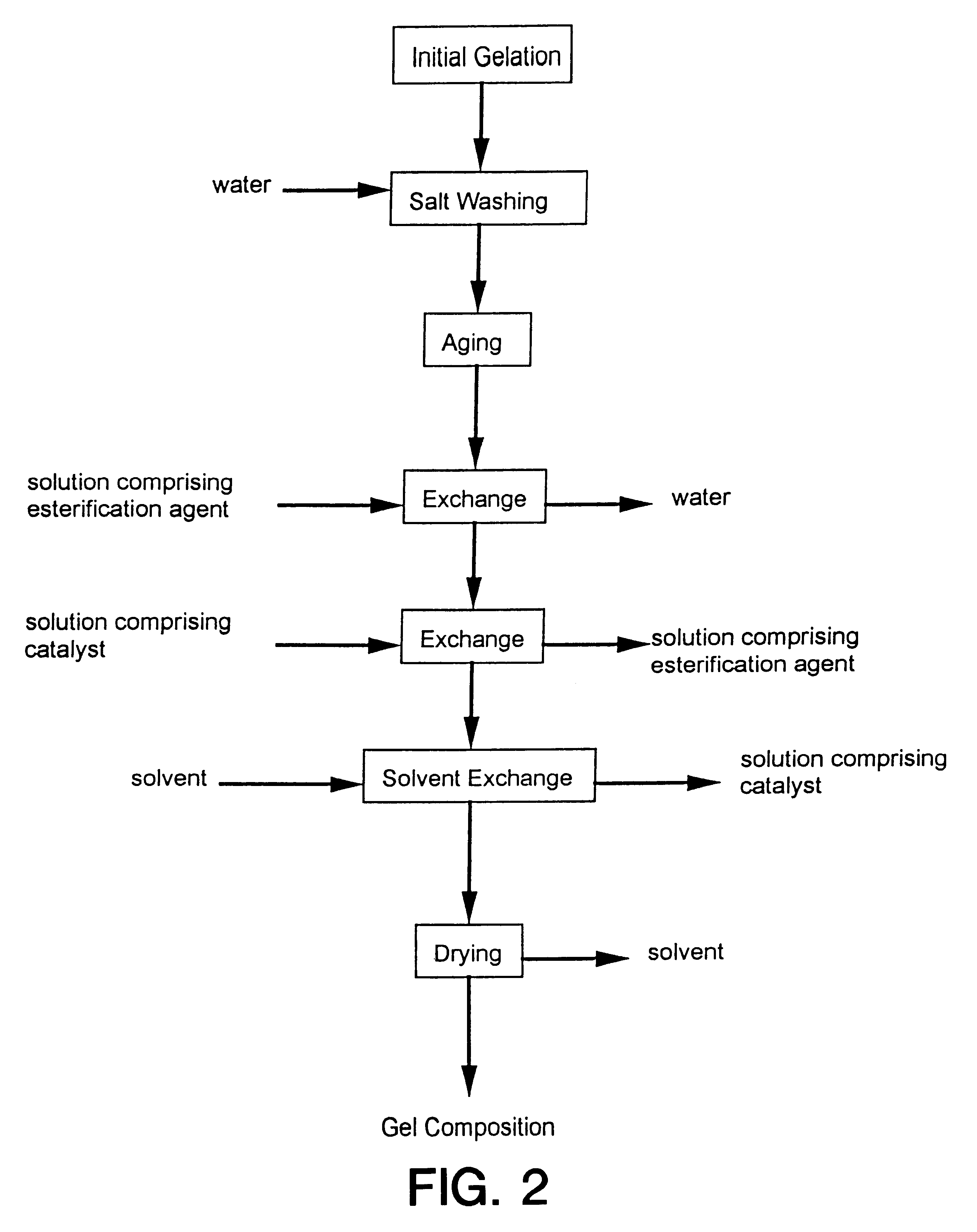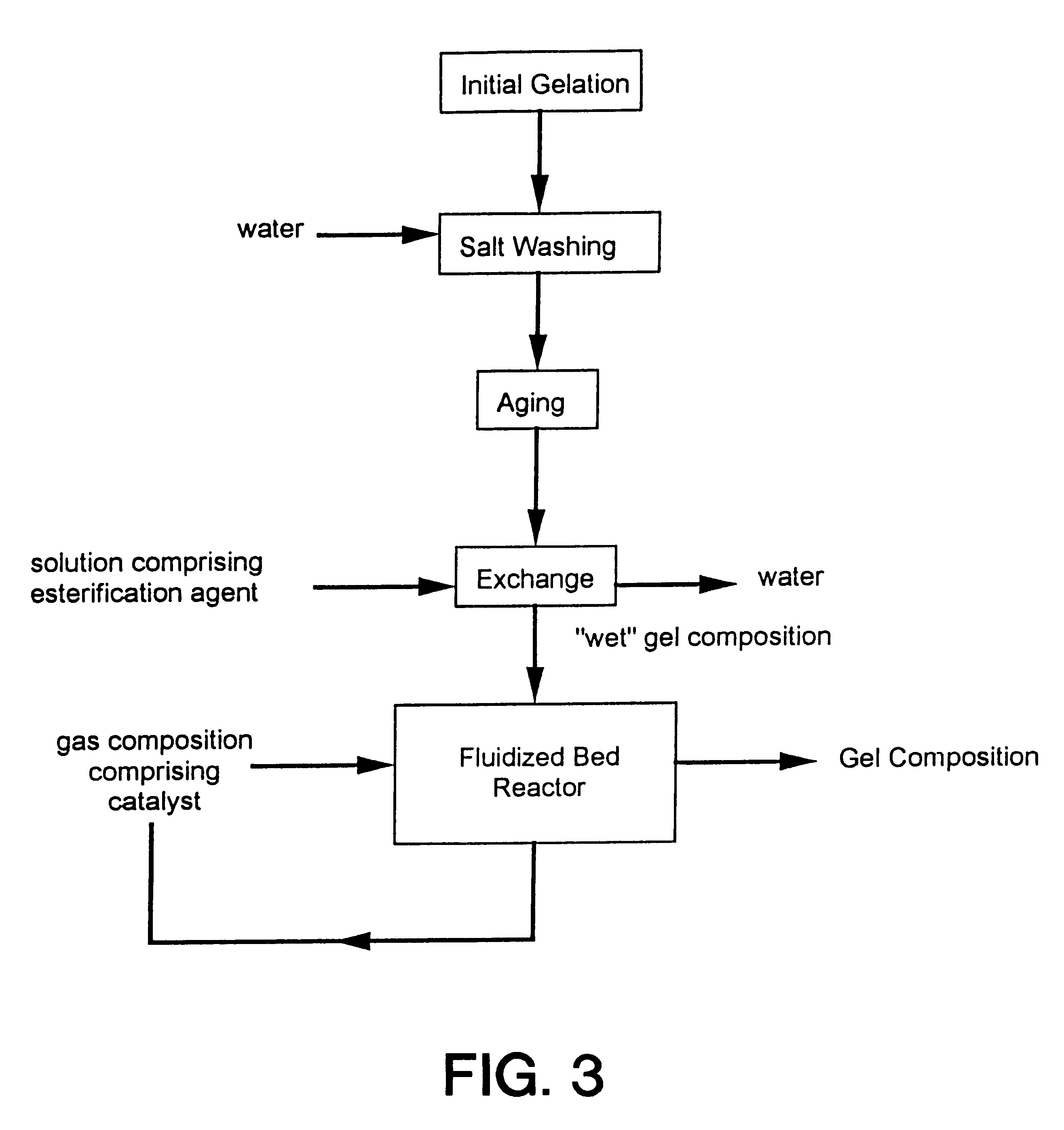Process for producing low density gel compositions
a gel composition and low density technology, applied in the field of low density gel composition production, can solve the problems of high cost of reagents, high cost of high pressure esterification step, and use of relatively expensive and/or complex processing equipment and conditions,
- Summary
- Abstract
- Description
- Claims
- Application Information
AI Technical Summary
Benefits of technology
Problems solved by technology
Method used
Image
Examples
example 2
This example illustrates an embodiment of a process of the present invention which includes esterification of a wet gel, comprising 10% solids, by weight, using ethanol as at least one esterification agent and monoethanolamine (MEA) as a esterification agent / catalyst in a solution comprising 2% MEA, at ambient pressure which in this case was 12.3 psia.
A silica stock solution was prepared by mixing a sodium silicate having an SiO.sub.2 / Na.sub.2 O molar ratio of 3.3:1, with deionized water in a volume ratio of water to sodium silicate such that the weight percent silica when neutralized with mineral acid was 10%. The sodium silicate was obtained from PQ Corporation, Valley Forge, Pa. and is available commercially.
A separate solution comprising 2M H.sub.2 SO.sub.4 was prepared by diluting concentrated 98% H.sub.2 SO.sub.4 from J. T. Baker, Phillipsburg, N.J. with water. An aliquot of the sodium silicate stock solution was then slowly added to an appropriate amount of stirred 2M acid s...
example 3
This example illustrates an embodiment of a process of the present invention which includes esterification of a wet gel, comprising 9% solids, by weight, using ethanol as at least one esterification agent and monoethanolamine (MEA) as a esterification agent / catalyst in a solution comprising 2% MEA, at ambient pressure which in this case was 12.3 psia.
To prepare the gel, the steps from Example 2 were repeated utilizing a silica stock solution prepared by mixing a sodium silicate having an SiO.sub.2 / Na.sub.2 O molar ratio of 3.3:1, with deionized water in a volume ratio of water to sodium silicate such that the weight percent silica when neutralized with mineral acid was 9%. The sodium silicate was obtained from PQ Corporation, Valley Forge, Pa. and is available commercially.
The resulting gel compositions had a rod density of 0.15 g / cc and a sharp decomposition of approximately 11% by weight as seen in the thermal gravimetric analysis spectra indicating that a portion of the surface ...
example 4
This example illustrates an embodiment of a process of the present invention which includes esterification of a wet gel, comprising 8% solids, by weight, using ethanol as at least one esterification agent and monoethanolamine (MEA) as a esterification agent / catalyst in a solution comprising 2% MEA, at ambient pressure which in this case was 12.3 psia.
To prepare the gel, the steps from Example 2 were repeated utilizing a silica stock solution prepared by mixing a sodium silicate having an SiO.sub.2 / Na.sub.2 O molar ratio of 3.3:1, with deionized water in a volume ratio of water to sodium silicate such that the weight percent silica when neutralized with mineral acid was 8%. The sodium silicate was obtained from PQ Corporation, Valley Forge, Pa. and is available commercially.
The resulting gel compositions had a rod density of 0.12 g / cc and a sharp decomposition of approximately 11% by weight as seen in the thermal gravimetric analysis spectra indicating that a portion of the surface ...
PUM
| Property | Measurement | Unit |
|---|---|---|
| density | aaaaa | aaaaa |
| tap density | aaaaa | aaaaa |
| density | aaaaa | aaaaa |
Abstract
Description
Claims
Application Information
 Login to View More
Login to View More - R&D
- Intellectual Property
- Life Sciences
- Materials
- Tech Scout
- Unparalleled Data Quality
- Higher Quality Content
- 60% Fewer Hallucinations
Browse by: Latest US Patents, China's latest patents, Technical Efficacy Thesaurus, Application Domain, Technology Topic, Popular Technical Reports.
© 2025 PatSnap. All rights reserved.Legal|Privacy policy|Modern Slavery Act Transparency Statement|Sitemap|About US| Contact US: help@patsnap.com



